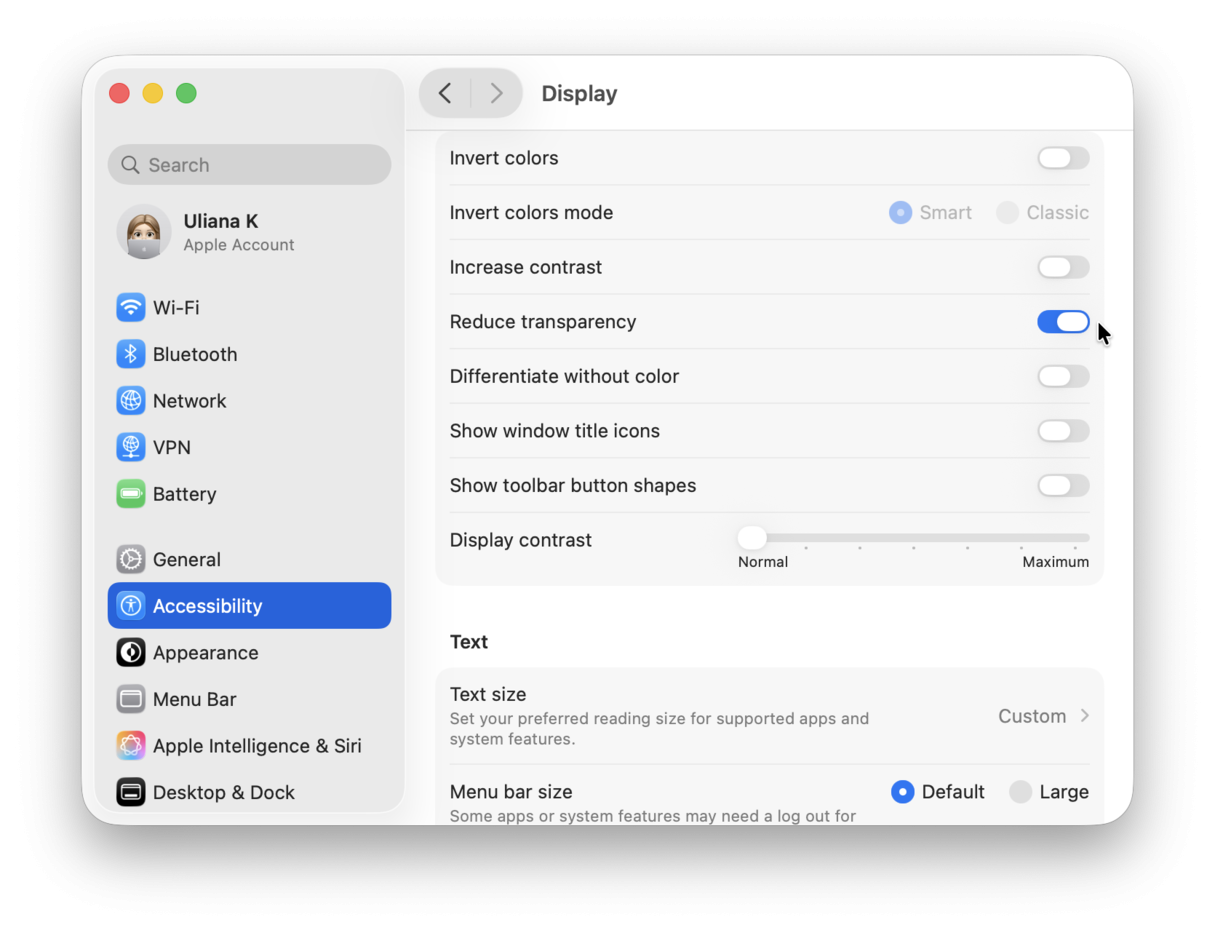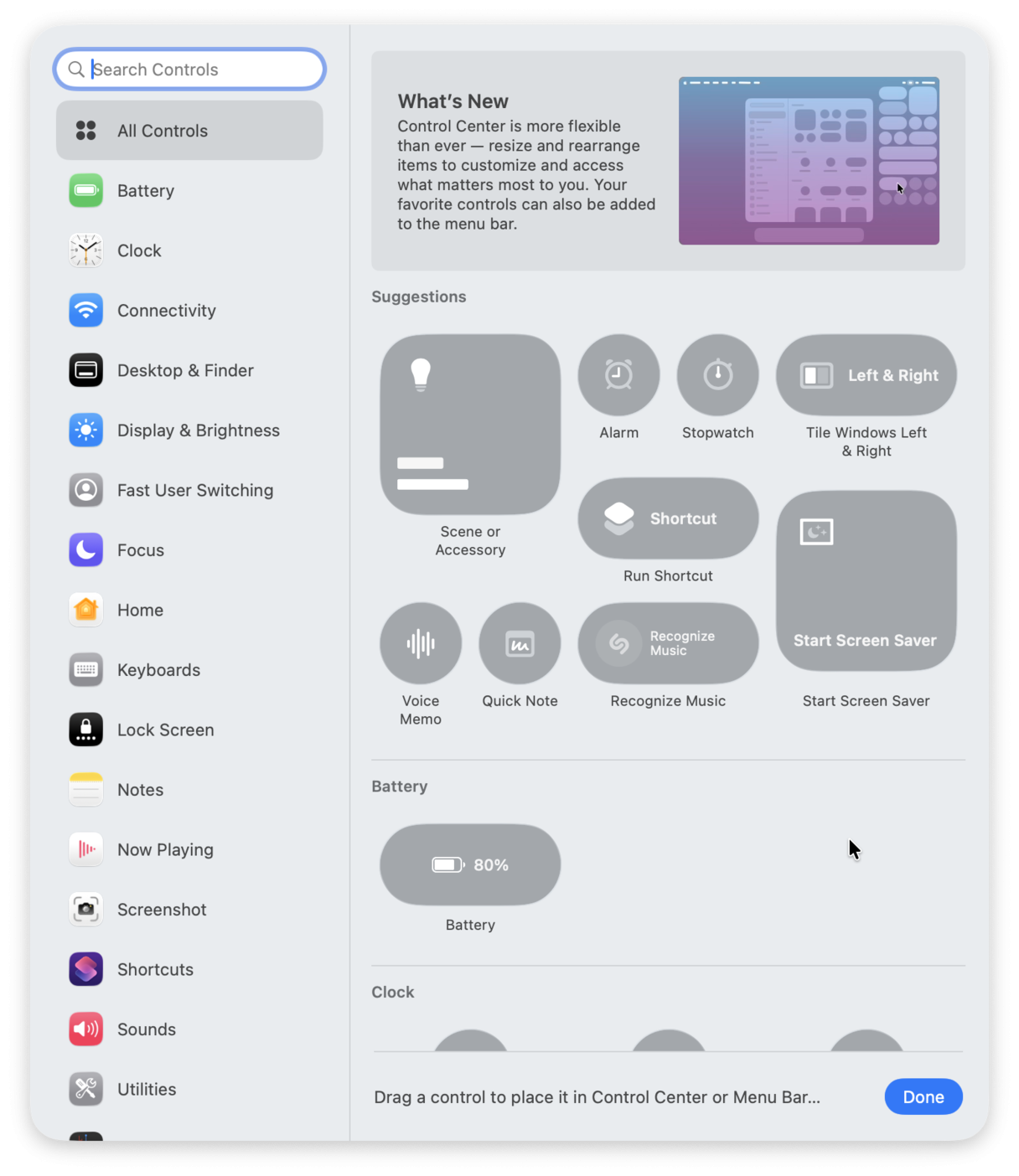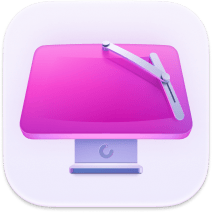Pros and cons of upgrading to macOS Tahoe
Have you been asking, "should I upgrade to macOS Tahoe?" New major Apple system updates are, of course, exciting, and while many of us can't wait to get our hands on them, many more are cautious, and rightly so. macOS Tahoe is Apple's biggest visual overhaul in years, but it's not without its drawbacks.
I've tested it extensively on my MacBook Pro and paid close attention to where it stumbles and where it shines. I'm hoping this guide will provide any dubious downloaders the information they've been searching for to make the right choice, so let's get into it.
Should you upgrade to macOS Tahoe?
When I started testing macOS Tahoe, I realized the only way to make sense of it was to split my thoughts into clear pros and cons for each part of the update. A new design might be beautiful, but slow on older Macs. A security improvement could also mean certain apps stop working. So, in the sections ahead, I've broken everything down by category, beta performance, features, compatibility, and supported models, hopefully with plain pros and cons for each, based on real-world use, not just Apple's marketing.
macOS Tahoe Beta reviews pros and cons
Tahoe Beta was released in June 2025, right after Apple's WWDC keynote, and is available through the Apple Developer Program or the Public Beta Software Program. I ran it on a spare Mac over the summer and kept my eyes open in the forums to put together this breakdown.
|
Pros |
Cons |
|
Access to new features early |
Unstable, with occasional crashes and app incompatibility |
|
Helps developers test software for compatibility |
Risk of corrupted files during update |
|
Early access and testing with UI changes like Liquid Glass design |
Slower performance on some Intel-based Macs |
|
Improved Control Center and widgets |
Certain older peripherals lose driver support |
|
Updated security patches ahead of public release |
Beta feedback can't always fix issues before launch |
For me, one big headache with beta testing is making sure all my apps are up to date; older versions tend to break more often in pre-release macOS builds, which isn't unusual, but can halt productivity. I always run the Applications feature from CleanMyMac, which has a handy Updater tool, before and during the beta. It checks every installed app (including non-App Store ones) and lets me update them all in one go, which saves me from hunting around for new versions manually; here's how:
-
Get your free CleanMyMac trial — you can test it for 7 days first.
-
Open, click Applications > Scan.
-
Click Manage My Applications > Updater from the sidebar.
-
Check apps and install any available updates.

If you're a developer, Beta access is valuable for testing compatibility. But for the regular user, the risks can outweigh the benefits until the stable version lands. Let's move on to macOS Tahoe features.
macOS Tahoe features pros and cons
I think the star attraction with Tahoe has to be the Liquid Glass design. It gives menus, sidebars, and window borders a serious aesthetic upgrade. But that's not all, there are functional changes too, from enhanced Spotlight search to the new macOS Journal app.
Modernized Liquid Glass visual style
Pros: Modern, unified, and visually striking
Cons: Can slow UI on Intel-based Macs
How to adjust Transparency:
-
Open System Settings > Accessibility > Display.
-
Toggle Reduce Transparency if the layered look makes text hard to read.

Desktop widgets that actually do something
Pros: Fully interactive, mark reminders as done, update notes, control music, or view live info without opening apps.
Cons: Occasionally, widgets may refresh slowly after the Mac wakes from sleep.
How to add widgets:
-
Click the date/time at the top right to open the Notification Center.
-
Scroll down and click Edit Widgets.
-
Select which Widgets to add.

Customizable Control Center
Pros: You can finally shuffle your most-used tools and declutter unused controls.
Cons: Can become cluttered if too many toggles are added, and third-party support depends on the app developer.
How to rearrange items:
-
Open System Settings > Menu Bar.
- Click Add Control under Menu Bar Controls.
-
Drag toggles up or down to change the order.
-
Use the Allow in Menu Bar toggle to keep your favorites visible.

Improved System Settings search
Pros: It's a lot faster and seems more intuitive for finding buried options and settings
Cons: If you use vague keywords, you can still have trouble locating them.
How to use it:
-
Open System Settings.
-
Use the search bar at the top.
-
Type the name of a setting or control you're looking for, and Tahoe will highlight exactly where that setting lives in the menu.
There's obviously a lot more features than this, but these are the most talked about ones; here's another quick general overview feature pros and cons list to help you fully get to grips with macOS Tahoe benefits.
|
Pros |
Cons |
|
|
|
|
|
|
|
|
Compatibility & system requirements in macOS Tahoe
I quickly noticed this update is not designed with older machines in mind. There are some hard limits and some soft ones you should know before upgrading.
32-bit software incompatibility
This isn't new, but it's worth repeating. Apple dropped 32-bit app support years ago, and Tahoe continues that policy. If you've been holding onto older software via workarounds, this update won't revive it. The only fix is to find a 64-bit alternative or run the app on a virtual machine with an older macOS.
Pro: Modern apps run more efficiently, with better security
Con: Legacy software is permanently out of reach without extra tools
Intel-based vs. Apple silicon Macs
On Apple silicon, Tahoe feels smooth, even with Liquid Glass transparency and widgets on the desktop. Intel? Not so much. Mission Control and window animations occasionally stutter, and AI-driven features like on-device transcription simply aren't available.
Pro: Macs with Apple silicon get the full feature set and better battery life
Con: Intel-based Macs miss certain AI features and run heavier animations more slowly
macOS security in Tahoe
Security is one area that every Mac benefits from. Tahoe ships with the latest XProtect and MRT updates, plus background security responses that can patch vulnerabilities without a reboot. Safari gains better tracking protection, and Mail has some new security enhancements too.
Pro: Overall, improved security and updates don't interrupt your workflow.
Con: Stricter security will mean more glitches to be expected, especially with third-party apps and utilities, until they're fully compatible.
Supported Mac models
Here's a quick reminder of the official compatibility list for macOS Tahoe:
-
Mac mini: 2018 and later
-
MacBook Air: 2020 and later
-
MacBook Pro: 2019 and later
-
iMac: 2019 and later
-
iMac Pro: 2017
-
Mac Studio: 2022 and later
-
Mac Pro: 2019 and later
If your Mac isn't here, you can't officially upgrade without third-party patching tools. And even if you do, you won't get a stable or supported experience.
So, should I upgrade to macOS Tahoe? Hopefully, this guide has the answers you need.

